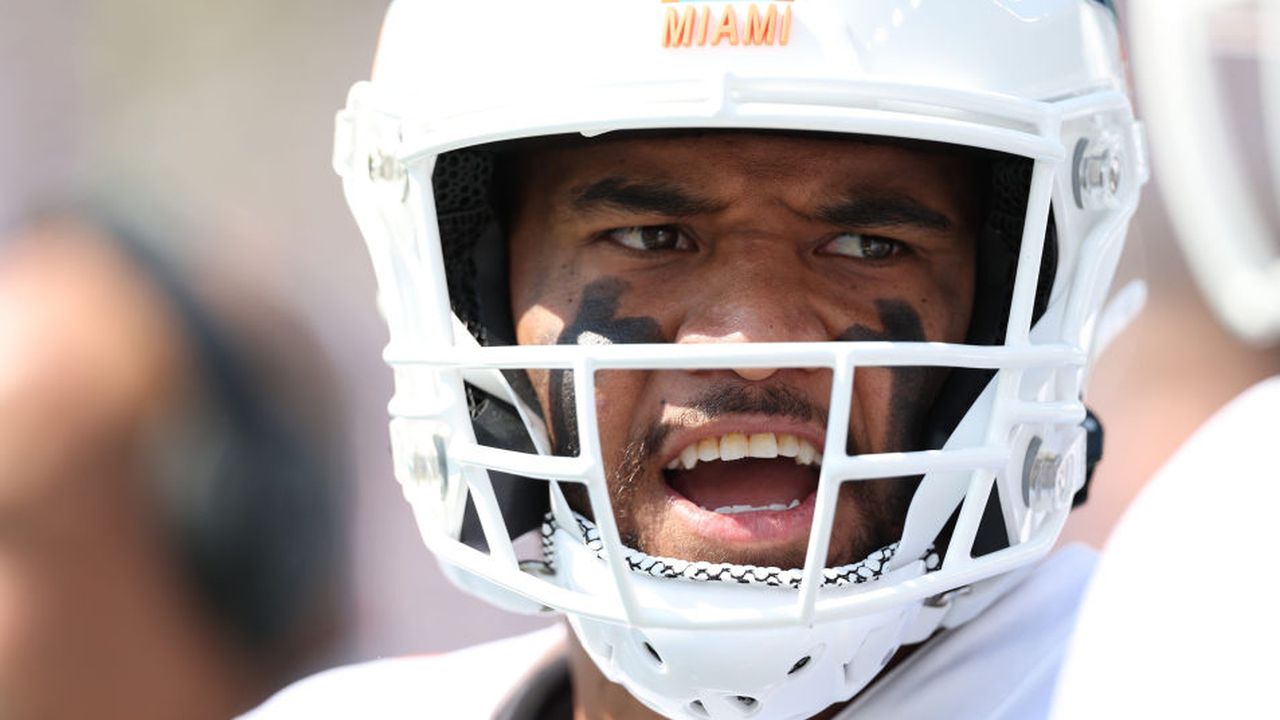Dolphins have no timetable for Tua Tagovailoa’s return
In the NFL’s concussion protocol, quarterback Tua Tagovailoa missed the Miami Dolphins’ 40-17 loss to the New York Jets on Sunday. With his backup, Teddy Bridgewater, now in the concussion protocol, too, there’s even extra urgency to the question: When will Tagovailoa return to action?
“I’m not even really thinking about his timeline,” Miami coach Mike McDaniel said on Monday when asked if Tagovailoa would be back for Sunday’s game against the Minnesota Vikings. “… We’re just trying to get him as healthy as possible. We’re pretty much in a 12- to 24-hour reoccurring evaluation process, and he’s doing well. He was here today, but he’s not ready to take the step to do some football stuff yet, so that will be — talk to me every 12 to 24 hours.”
· STATE ROUNDUP: FORMER PREP STARS MAKE CIRCUS CATCHES
· ALABAMA ROUNDUP: DERRICK HENRY PLAYS LIKE HIMSELF
· AUBURN ROUNDUP: CARL LAWSON ROUGH ON MIAMI QB
Tagovailoa sustained a concussion during a sack in a 27-15 loss to the Cincinnati Bengals on Sept. 29.
The former Alabama All-American must complete a five-step process to be cleared to play again. McDaniel didn’t detail Tagovailoa’s place in that pipeline, but “football stuff” comes up for the first time in the third step.
The return process begins with symptom-limited activity. This is mainly a rest period, although limited stretching, balance activities and light aerobic activity are allowed. If a player does not experience an increase in his symptoms or show signs of a concussion on neurological examination, he can proceed to the next phase. That requirement holds step-by-step throughout the return process.
The second step is aerobic exercise, a graduated exercise program of stationary-bicycle or treadmill work, stretching and balance training. The player also can return to team meetings at this stage.
Upon demonstrating that he can participate in cardiovascular exercise without an increase in symptoms, the player goes to the third step, which is football-specific exercise. Now the player can engage in strength training and practice with the team in “sport-specific exercise” for no more than 30 minutes.
On the first snap of Sunday’s game, Bridgewater got penalized for intentional grounding in the end zone, which produced a safety, and took a hit that warranted a concussion evaluation.
Bridgewater passed that, but because the independent certified athletic trainer spotter in the press box reported the quarterback exhibited ataxia after getting up, he couldn’t return to the game.
Ataxia — abnormality of balance/stability, motor coordination or dysfunctional speech caused by a neurological issue – entered the concussion protocol on Saturday, the result of changes approved by the NFL and the NFL Players Association after an investigation of the handling of Tagovailoa in the Dolphins’ 21-19 victory over the Buffalo Bills on Sept. 25.
“Teddy, he had no symptoms today,” McDaniel said. “He had no symptoms yesterday, but per the rule change, he is being treated as though he has a concussion, so he is in the subsequent protocol.”
Against Buffalo, the back of Tagovailoa’s helmet bounced off the turf when he took a roughing-the-passer hit with two minutes left in the first half. Unsteady getting to his feet, Tagovailoa stumbled to the ground after a few steps and was sent off the field.
In the locker room, Tagovailoa passed his concussion test and returned to play the second half. He told reporters his momentary balance issue was the result of a back injury sustained on a first-half quarterback sneak.
The investigation found that all the parties in the NFL’s safety net to keep concussed players off the field did what they were required to do. But because “the outcome in this case was not what was intended when the protocol was drafted,” the procedure was changed, with ataxia added to the “no go” list, meaning a player exhibiting the behavior can’t play regardless of the outcome of the concussion evaluation.
Bridgewater’s benching has been panned as an “overreaction” after Tagovailoa’s frightening concussion against Cincinnati.
“I was there at the game,” McDaniel said. “I was watching him intently. It was the first offensive play of the game, and I didn’t see him stumble, but I’m also not really in the business of grading and coaching spotters. The rule is in place for player safety, and I’m all about that. Honestly, whether he stumbled or not, the rules are the rules.
“My only takeaway from the whole process was really my personal relationship with Teddy. Teddy was very prepared to play that game. He put a lot into it, and I was excited to see him play. My heart hurt that he was unable to execute something he was very prepared for, and his teammates were excited to see him play.”
Rookie Skylar Thompson played the rest of the game at quarterback for Miami in his NFL debut. Although Bridgewater now faces the five-step recovery process, too, to get back on the field, McDaniel did not commit to Thompson as the Dolphins’ starting quarterback against the Vikings on Sunday.
“There’s just, like, too many variables right now for my head to even absorb,” McDaniel said. “I think those decisions are important and without a shadow of a doubt, I’ll make that with the best interest in the football team. But there are literally too many variables that I don’t feel comfortable going down that road. But, hopefully, in the next couple of days, I will.”
FOR MORE OF AL.COM’S COVERAGE OF THE NFL, GO TO OUR NFL PAGE
Mark Inabinett is a sports reporter for Alabama Media Group. Follow him on Twitter at @AMarkG1.
